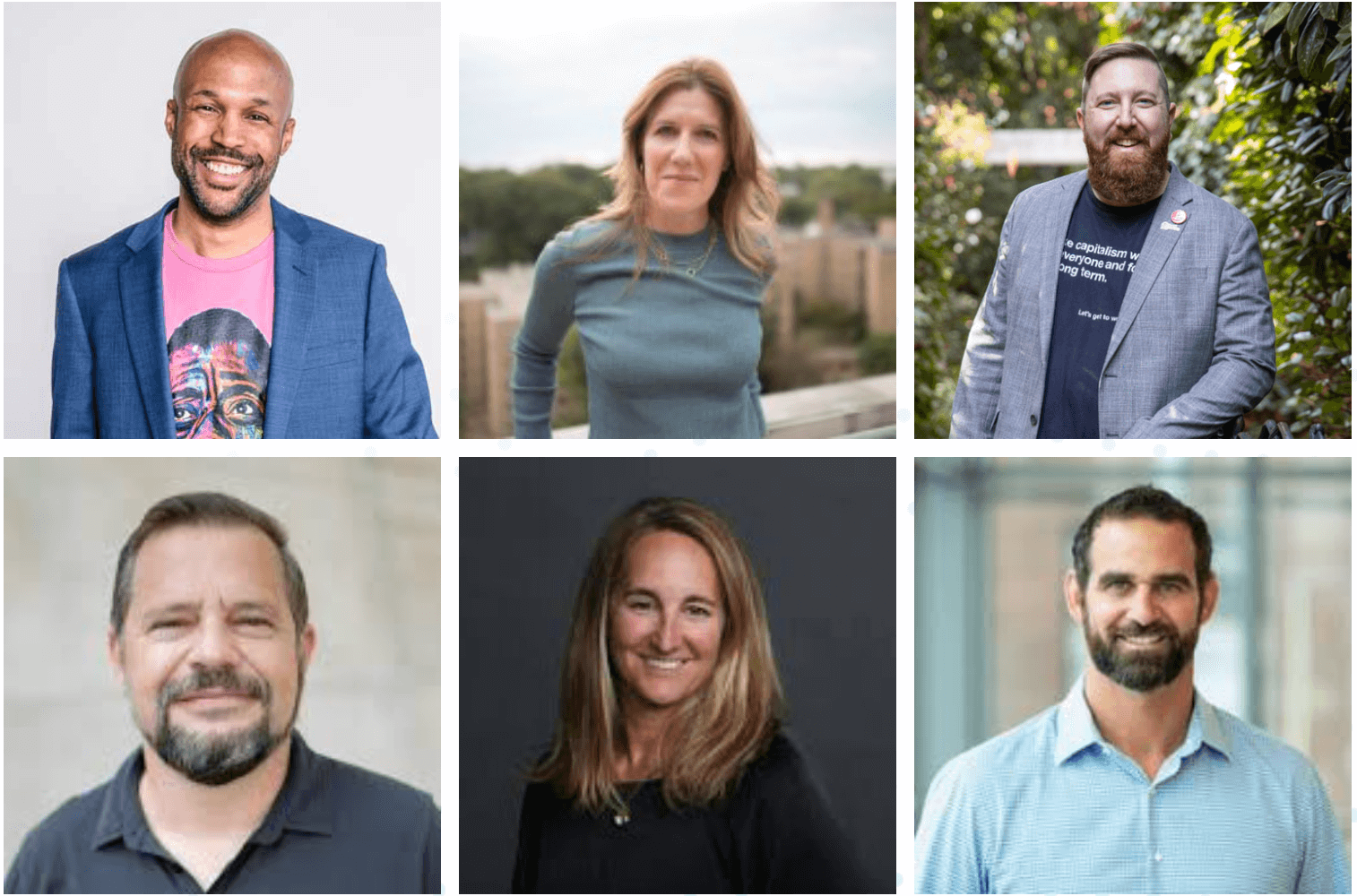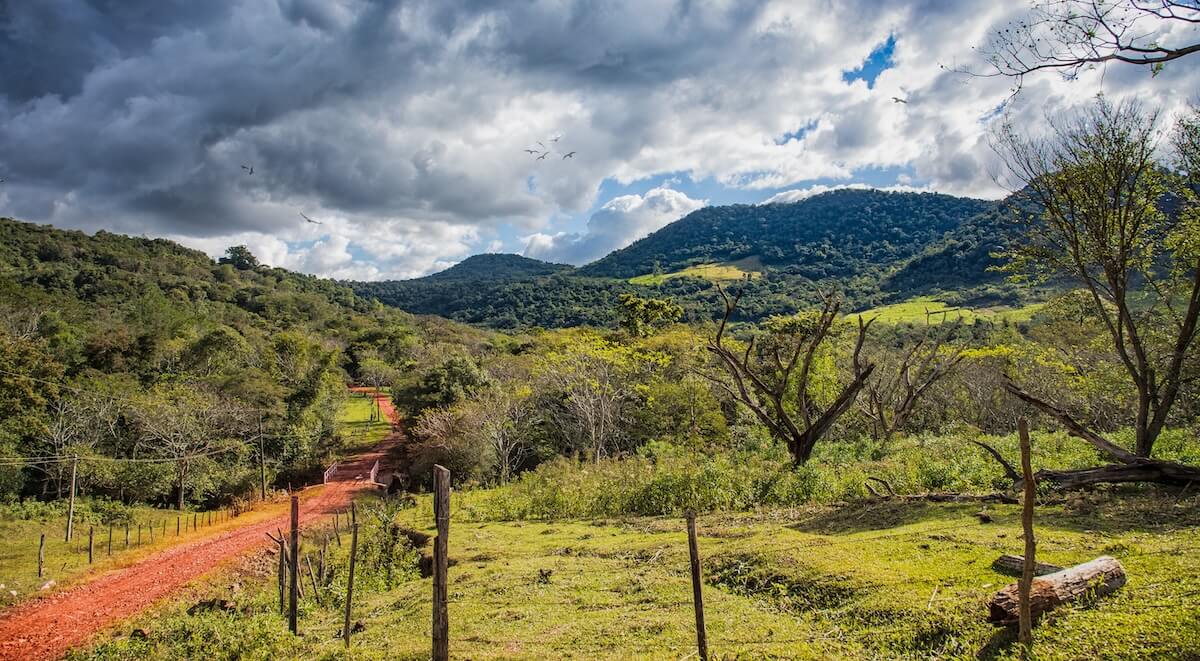ImpactAlpha’s What’s Next series, produced in partnership with the Global Impact Investing Network, provides a platform for practitioners and experts to reflect on the future of impact investing.
ImpactAlpha, Jan. 22 – Plutocrats and political leaders in Davos this week are grappling with a widespread feeling that capitalism must change. ImpactAlpha’s readers already are drawing on their experience to model what’s next.
More than two dozen Agents of Impact responded to our call for ways to shift investor mindsets and behavior and drive systemic changes.
Amit Bouri of the Global Impact Investing Network kicked off the discussion in ImpactAlpha’s What’s Next series. “Impact investors are already modeling many of the behaviors that the broader financial community can emulate as society moves toward a new iteration of capitalism,” he wrote.
Among the suggestions in Part 1 of our roundup: New Forests’ MaryKate Bullen calls for the ‘TCFD for nature,’ a framework for valuing the ‘natural capital’ contributions of forests and agriculture, modeled on the recommendations of the Task Force for Climate-Related Financial Disclosure. “Nature must be understood as capital,” she writes.
The Impact Investing Institute, along with the Impact Management Project, is developing digital tools to allow investors to assess and compare the impact of their investments as mainstream asset managers jump on the impact bandwagon, writes the institute’s Sarah Gordon.
GAWA Capital Partners’ Luca Torre wants to see managers ranked in terms of impact intentionality, management and incentives – and their data-driven theories of change.
“We are entering the decade of action if we want to reimagine the world as it has never existed before: A world with no poverty, no hunger and no inequity,” writes Aavishkaar’s Vineet Rai. “To deliver this dream we must act, and act in unison with single purpose and goal to change the world.”
Muster evidence to combat impact-washing
Sarah Gordon, Impact Investing Institute
I share Amit’s vision of a world where finance plays a central role in solving the biggest social and environmental challenges facing the global community. We must, though, also recognise that the growing interest in impact investment presents its own issues.
“Impact washing” or “social washing” is increasing as asset managers, conscious of its marketing appeal, jump on the impact bandwagon. This means investors need better measurement and comparison tools as well as more supportive evidence that there is a fit between their requirements and the impact investments on offer.
One of our focus areas at the Impact Investing Institute, which launched in November 2019, is promoting transparent, consistent and comparable impact reporting. Working alongside the Impact Management Project, we will provide digital tools to allow investors to assess and compare the impact of their investment and bring us closer to a reality in which social and environmental impacts are integrated into all investment decisions.
- Removing barriers. Earlier this month the Impact Investing Institute, in partnership with Deloitte, released a report highlighting that while progress in impact reporting practice is being made, the barriers to effective impact reporting practice are still great.
- Accelerating change. Without significant action from progressive keystone players, the rate of change in impact reporting practice will be insufficient to meet society’s global challenges, including the climate emergency and our worsening global inequality.
Grade asset managers on impact
Luca Torre, GAWA Capital Partners
I am in full agreement with Amit’s statement about the need of systemic change to get impact investing fully integrated in our society. However, in my view, if we want society to embrace impact investing and avoid “impact-washing” we need to be sure we are all talking the same language.
To follow the GIIN’s Roadmap document framework – we need to do more work on identity (see, “Building a trusted identity for the impact investing movement”). It is not about defining what impact investing is or is not because a lot of effort has gone into that – but rather recognizing that there are different approaches to achieve impact and that some approaches lead to deeper and more sustainable impact then other.
It is basically about building on the Core Characteristics of Impact Investing and defining a grading system. Such grading should be focus on how managers design and execute an investment strategy. For example, a certain strategy would be more or less deep in terms of impact depending on:
- Intentionality. Is intentionality to make an impact at fund level or at investment level. Is the fund investing in companies that have the intention to solve a social problem?
- Managing impact. Does the company have a system to positively improve the social impact of the companies it invests?
- Social carried interest/ alignment of incentives with social impact
- Theory of change. is the company building investment strategy to address a very specific social or environmental problem?
- Data driven. is the theory of change based on real scientific studies?
What I am proposing is similar to what the social performance taskforce has been doing with the Universal Standards to assess how well prepared are financial institutions to deliver social impact. If we do not do this I am afraid that Amit’s proposals to reshape mindsets, align incentives and integrating impact in investment theory would be less effective and there will be the incentives by many players to do “impact-washing.”
Tailor products to investor intentions
Adam Bendell, Toniic
The growing mainstream attraction to the term impact investing is mostly positive, but not wholly so: the ensuing confusion over terminology is impeding market growth.
What’s next is clearer product differentiation based on investor “intention style.” At Toniic we distinguish three sustainable investment motivations: the financial ESG motive, the values alignment motive and the impact contribution motive.
- Financial ESG. The financial ESG motive uses ESG factors to improve risk-adjusted financial performance. A factor will be included in the investment analysis only if it might materially influence financial performance in the medium term. This values-neutral approach lies within the traditional investing paradigm to “price in” financially material externalities, and thus avoid concerns about fiduciary duty and systemic financial underperformance. It does not evaluate effects on people and planet that surely won’t affect financials.
- Values alignment. The values alignment motive is to invest in alignment with the values of the investor. This approach broadens the filter to factor in pure externalities, and thus concern for our planet and its inhabitants. Investments are available in every asset class, including public markets. Such investments signal that impact matters, but there is no direct mechanism for the investor to contribute positive net social or environmental impact.
- Impact contribution. The impact contribution motive is to contribute to the solution of big world problems. It is not yet easy to apply in some asset classes or thematic areas, but it is the deepest expression of “investing for good.” It employs explicit mechanisms for investor contribution to impact, such as growing undersupplied capital markets or using shareholder engagement.
All three of these approaches are big upgrades on traditional investing, and each has a role in a broad impact portfolio. Imagine the market potential if it were easy for investors to select appropriate products based on their intention style!
Take risks and act in unison to change the world
Vineet Rai, Aavishkaar
The world is a tough nut to change, however if you really want to bring about the change you would need to do things differently and yet look and feel the same that the financial global system is used to seeing. My three mantras for changing the world include:
- Lead. Large number of us would need to step away significantly from the what the world believes in and yet convince them that we are not different. Our failure currently has been that we have tried to look more like the global economic system rather than finding something that is new and different and convince the world that it is the same. Leadership calls for taking risk and losing it all while backing what you believe in.
- Inspire. If you risk everything you have to bring about a change you would do enough to inspire the world to change.
- Act. We are entering the decade of action if we want to reimagine the world as it has never existed before: A world with no poverty, no hunger and no inequity. To deliver this dream we must act, and act in unison with single purpose and goal to change the world.
Put a value on natural capital
MaryKate Bullen, New Forests
The valuation of natural capital must shift from an exercise in theoretical accounting to a fundamental part of investment analysis and the way we value global assets. This is especially true for real assets, like agriculture and forestry, which are dependent on natural capital for their very being. It’s not enough to merely account for impacts on things like GHG emissions, water use, and geographic footprint. Instead we need to use data and impact analytics to demonstrate the vital value that these services provide and how it supports risk mitigation, value preservation, and drives returns for investors.
- Real value. In real assets, we can embed that value in annual appraisals – the better management of a forest can lower its fire risk, increase its resilience to environmental change, and create more stable operating conditions. All of this should lead to an increased Net Present Value. This real value delivered must be understood in financial terms, with well described and understood metrics.
- Risks and opportunities. One way to realize this transformation is through developing a “TCFD for Nature” – that is, a common framework through which natural capital risks and opportunities are identified and managed, with clear links to financial value. By mainstreaming natural capital management in the same way that we are beginning to mainstream climate impact management, we can drive capital to nature-based solutions. Nature must be understood as capital.
Embrace next-gen impact investors
Kristin Hull, Nia Impact Capital
2020 is not only our year, as we see the impact investing industry grow, 2020 also marks the decade that we as investors work collectively to actually shift the economy. From the Fed (now hosting convenings on climate change) to millennials seeking values alignment for their assets, directing money with intention and purpose in service of addressing our worlds greatest risks will become simply “smart investing.”
- Wealth transfer. The wealth transfer we keep hearing about is real, and the wave of women and young people inheriting assets is here, as is the climate crisis, the #MeToo movement and an increasingly palpable state of income inequality. This combination of factors spurs a desire for transparency – from the decision making table to ingredients in and supply chain of consumer products, and meaning, resulting in an increased demand for positively impactful financial products and instruments.
- Democratizing investing. Another change we will see comes from fintech and that ability to invest fractional shares – allowing lower barriers to entry so that more and more people can access and request positively impactful investing, now seeing themselves as investors, as stakeholders participating in our economy. The empowerment and ripple effects of providing more access to publicly traded companies and financial betterment will be something to watch.
- New normal. The overarching theme for 2020 will be individuals, nonprofits and larger organizations seeking a different way to relate to our finances, really connecting the dots between our investments and the world in which we live. As we view our investments as extensions of ourselves and expressions of our organizations, looking at portfolio construction with a gender lens and an eye for sustainability become the new normal.
Reward community-driven impact
Shu Dar Yao, RSF Social Finance
Early impact investors have realized that good intentions are not enough to drive impact. Outputs (what is created at the end of a process, such as the number of school lunches served) are not necessarily enough either. What we’re really after are outcomes (level of performance or achievement that occurred because of the activity or services provided, such as measurably better student health). The challenge is how to act on that insight. RSF Social Finance’s solution is a structured investments evaluation process that combines impact analysis with the traditional risk-return analysis of modern portfolio theory.
- Community voice. Ideally, the beneficiaries set these goals, so we are partnering with social enterprises and fund managers to understand which performance metrics are most meaningful to the communities involved. We’ve just begun implementing this approach and we expect some missed targets, but we seek to understand why failures occur and integrate those lessons into future decision-making.
- Rewarding impact. So far we’ve found that many investees who have deep community engagement or ability to change systems have no way of using evidence to demonstrate the impact of their hard work. To address this issue, we’re piloting a financial incentive structure that creates a business case for allocating resources to enhance impact measurement and management practices. Think of it as results-based financing in an asset management context. We’re still at the beginning stages of this approach, but the need for new structures that reward impact success is clear, and we see an opportunity to continue the momentum social impact bonds and development impact bonds have built. We look forward to sharing what we learn.
Be transparent with impact data
John Burg, Dexis Consulting Group at USAID
To shift investor mindsets and behavior towards things like increased risk appetite, the onus is on firms to instill faith and trust in the investor base. Doing this effectively will require firms to be more transparent about the data, that led to evidence, that backs up claims of impact. This is no longer a coming reality, we know it’s here based on the increase in firms hiring professionals out of the international development space with experience in monitoring and evaluation.
- Transparency. What now is on the horizon and rapidly approaching is how firms will manage the expectations for impact transparency among investors without giving away their trade secrets to competing firms in the impact marketplace. The question is no longer ‘when’, it is ‘how’.
- Dilemma. This then opens the door to a moral dilemma – if firms are claiming impact, but are unwilling to help more people by revealing their profitable secrets to success, does that jeopardize the trust of investors? Again, it will fall to firms to negotiate this terrain in a way that keeps the industry on a positive path.











